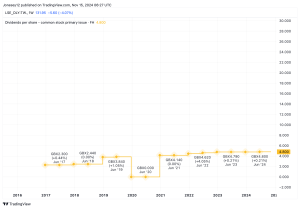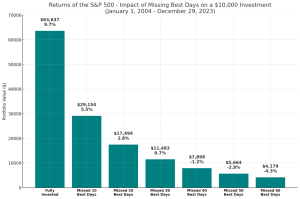Ford Motor Co.’s solid beat-and-raise late Thursday took a backseat to concerns about the automaker’s delayed EV production goals, but that didn’t stop Ford’s top executive from talking about an often-forgotten side of the EV market — and take a small swing at a recent General Motors Co. action.
In the call with analysts following the results, Ford’s
F,
Chief Executive Jim Farley talked up hybrids as a possible way that Ford could stand out amid increasing EV competition. Farley also took a veiled swipe at GM
GM,
which earlier this week unveiled plans to bring back the Chevy Bolt.
A couple of years ago, the auto industry thought in “extreme” terms between hybrids and EVs, Farley said. The industry now realizes — and it has seen in markets such as China — that there are several degrees of electrification in between those two ends, he said.
Ford decided to keep investing in heavy-duty hybrid vehicles and it has been “surprised” at some of their popularity, Farley said.
Don’t miss: Ford revenue jumps 12%, but stock heads lower as Wall Street spooked by shifting EV production goal
Hybrids are more expensive than internal combustion-engine vehicles, but are cheaper than electric vehicles because their batteries are significantly smaller even in plug-in hybrids, which are capable of driving a few dozen miles solely on an electric charge.
For example, Farley said Ford never thought it would see a 60% hybrid mix for its compact pickup truck Maverick. “It’s far beyond our expectation, and so we’re just listening to the market,” he said.
Ford’s internal-combustion customers “don’t want to be left behind,” and to them decarbonizing is just as attractive to Ford. Ford’s “pro” customers as well could view hybrids as an alternative, he said.
“All I’m saying is, you’re going to see a lot more hybrid system from us,” but perhaps not in the traditional sense of a Toyota Prius or a Ford Escape hybrid, Farley said.
That’s when the little side eye to GM came about.
When asking about capital requirements to EVs, an analyst mentioned one of Ford’s “competitors” that had announced this week that one of their vehicle programs slated to end had been “refreshed.”
Related: GM raises profit outlook, tops estimates, but stock weighed down by $792 million recall charge
GM, which reported second-quarter earnings on Tuesday, surprised markets by saying that it will bring back a revamped version Chevy Bolt at an unspecified time in the future.
That was an about-face for GM, which in April said that the current version of Bolt would end production this year. The future Bolt will be built on GM’s next-generation EV platform and battery architecture.
“I want to be really clear about this,” Farley said. “All of you haven’t yet seen our second-cycle EV strategy, or even the third cycle that we’re working on, and I’m not going to tell our competitors about that right now, but I will tell you that it’s very important to know” that Ford’s strategy is not to build tax-credit-compliant vehicles that may be very affordable for buyers “but lose lots of money.”
“That’s not our strategy when it comes to electrification. Our strategy is to make 8% margin” regardless of price,” the CEO said.
GM is thought to lose money on the Bolt, and not just because of its thinner margins that are common with compact cars, electric or otherwise. All Bolts and Bolts EUVs ever produced, more than 100,000 vehicles, eventually had to be recalled for battery swaps, with GM taking a charge of nearly $800 million this quarter related to the massive recall.
The Bolt eventually qualified for tax credits under the Biden administration’s Inflation Reduction Act, which boosted sales.
Not at Ford, Farley said. “We don’t create greenhouse gas credits between our businesses … We don’t play games like that.”
This post was originally published on Market Watch






